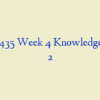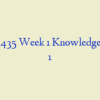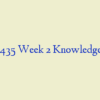Description
NSG 6435 Week 3 Quiz – Question and Answers – South University
- What age do children usually begin receiving the human papillomavirus vaccine (HPV)?
- When can a child stop using a booster seat in the car?
- A 13-year-old client diagnosed with infectious mononucleosis 2 weeks ago is in your office today c/o abdominal pain to the upper left quadrant, is febrile and tired. Based on the client’s recent history, what is the best intervention?
- An established 14-year-old client who recently returned from camp presents to the clinic c/o chills, severe headache, myalgias, malaise, GI upset/tenderness, diarrhea, cough, conjunctival injection, and a fever. On exam, the provider notes a rash of faint pink spots on the wrists, forearms, ankles, and the trunk. What is the most likely diagnosis?
- A client with chickenpox who cannot stop itching presents to the clinic requesting relief. What can the provider do to help this client?
- An infant can complete hand-to-hand transfers at what age?
- Which is the most appropriate anticipatory guidance for the child diagnose with fracture through the growth plate? nsg 6435 week 3
- The provider learns that the family of a client recently rescued a cat from the outside. To prevent the risk of toxoplasmosis, which anticipatory guidance is most appropriate?
- A 9-day-old client presents to the clinic who is sluggish, has a temperature of 97°F, HR 105, cool extremities, and loss of appetite, presents to the clinic. What should the provider do?
- The provider understands that a client with a history of hemolytic anemia and a recent diagnosis of erythema infectiosum (fifth disease), is at risk for which complication?
NSG 6435 Week 3






